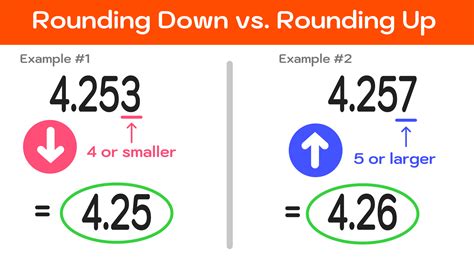How to Round to the Nearest Hundredth: A Simple Guide
Rounding numbers is a fundamental math skill with broad applications, from everyday calculations to complex scientific analyses. This guide focuses specifically on how to round to the nearest hundredth, a common requirement in various fields. Mastering this technique will improve your accuracy and efficiency in numerous tasks.
Understanding Hundredths
Before diving into the rounding process, let's clarify what a hundredth represents. A hundredth is one part out of one hundred (1/100) and is represented by the second digit after the decimal point. For example, in the number 3.14159, the digit '4' is in the hundredths place.
The Simple Steps to Rounding
Rounding to the nearest hundredth involves these straightforward steps:
-
Identify the Hundredths Digit: Locate the digit occupying the hundredths place (two places after the decimal).
-
Examine the Next Digit: Look at the digit immediately to the right of the hundredths digit (the thousandths place).
-
Round Up or Down:
- If the thousandths digit is 5 or greater (5, 6, 7, 8, 9), round the hundredths digit up by adding 1 to it.
- If the thousandths digit is less than 5 (0, 1, 2, 3, 4), keep the hundredths digit as it is.
-
Drop Remaining Digits: After rounding, remove all digits to the right of the hundredths place.
Examples to Illustrate
Let's walk through a few examples to solidify your understanding:
Example 1: Round 3.14159 to the nearest hundredth.
- Hundredths digit: 4
- Thousandths digit: 1 (less than 5)
- Rounding: Keep the hundredths digit as 4.
- Result: 3.14
Example 2: Round 2.786 to the nearest hundredth.
- Hundredths digit: 8
- Thousandths digit: 6 (greater than or equal to 5)
- Rounding: Add 1 to the hundredths digit (8 + 1 = 9).
- Result: 2.79
Example 3: Round 9.995 to the nearest hundredth.
- Hundredths digit: 9
- Thousandths digit: 5 (greater than or equal to 5)
- Rounding: Add 1 to the hundredths digit (9 + 1 = 10). This results in carrying over 1 to the tenths place, resulting in 10 in the hundredths place. Then the tenth place increments by 1 also.
- Result: 10.00
Practical Applications
Rounding to the nearest hundredth is frequently used in various contexts:
- Financial Calculations: Rounding monetary amounts to the nearest cent.
- Scientific Measurements: Reporting experimental data with appropriate precision.
- Engineering Design: Specifying dimensions with required accuracy.
- Data Analysis: Presenting summarized data in a user-friendly format.
Mastering the Technique
Practice is key to mastering rounding to the nearest hundredth. Try rounding different numbers yourself to build your confidence and accuracy. With a little practice, you'll be able to round with ease and precision!
